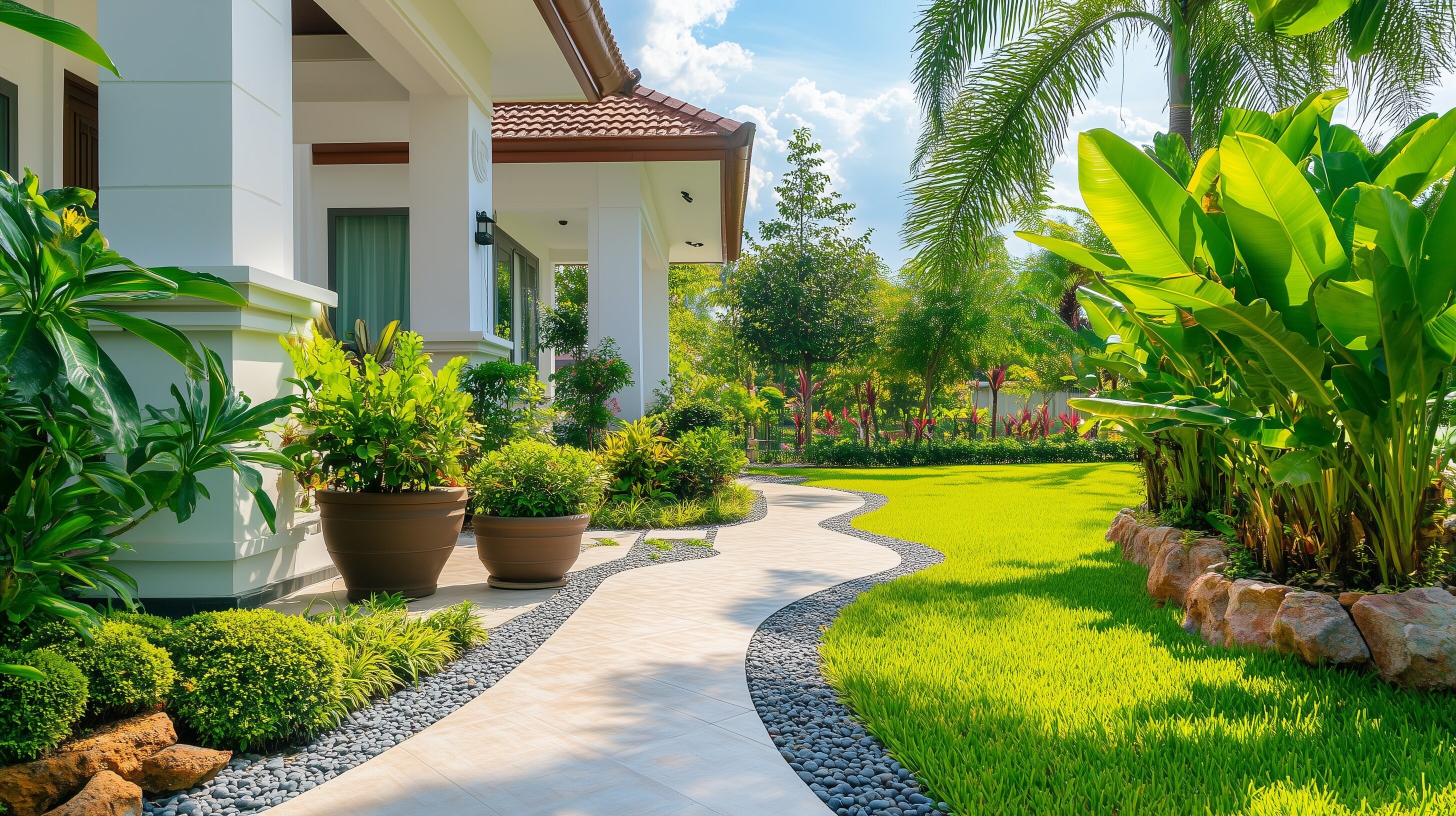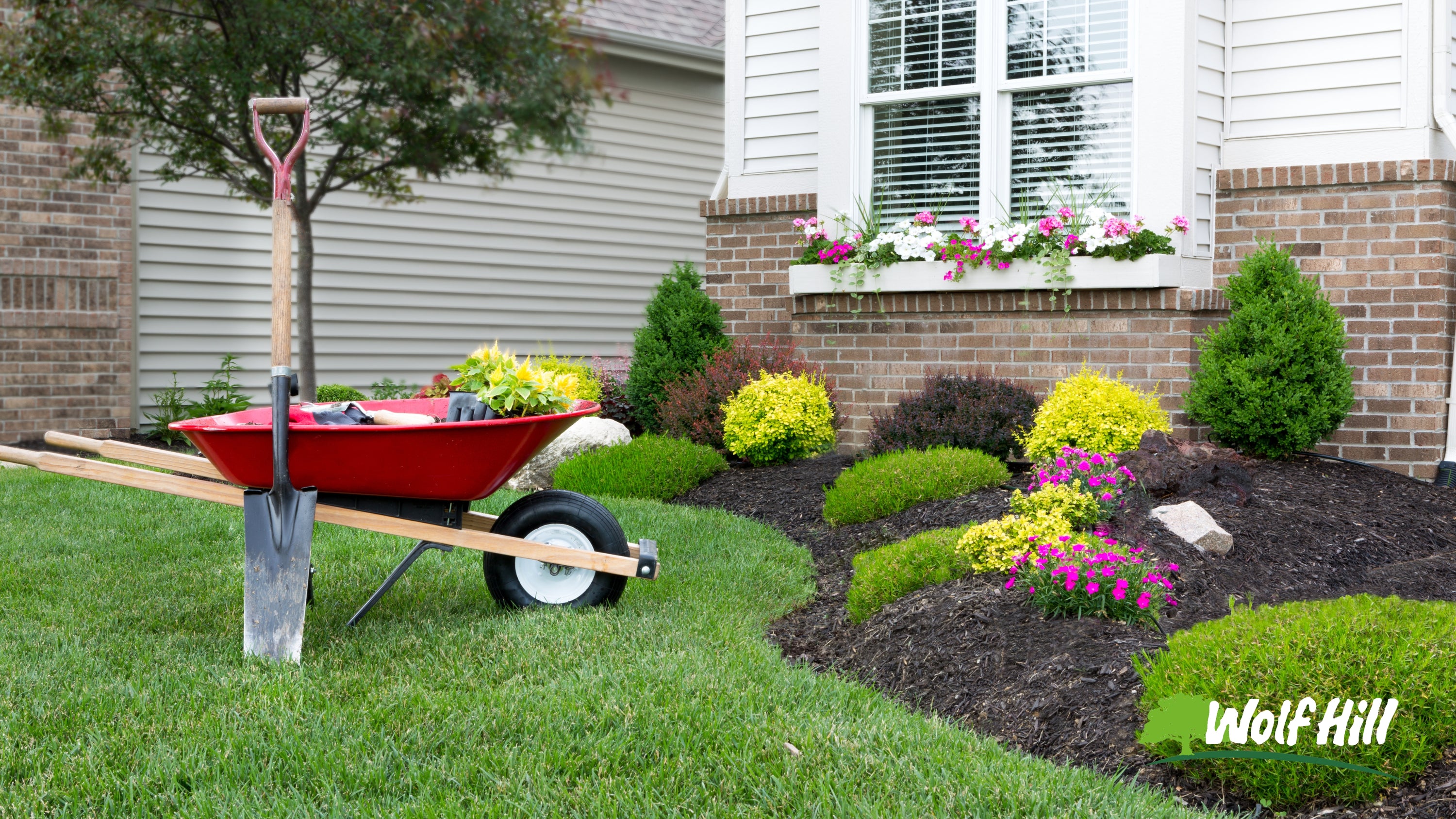6 Creative Grill Islands Designs for the Ultimate Backyard Upgrade
Wiki Article
Everything about Landscape design: Transforming Your Outdoor Areas Into Picturesque Hideaways
Landscaping plays an essential duty in boosting outdoor areas. It integrates art and performance to develop welcoming environments. By recognizing layout concepts and selecting the right plants, one can accomplish a balanced and unified landscape. Furthermore, incorporating hardscaping elements uses framework and energy. The journey to a stunning landscape does not finish with installation; ongoing maintenance is required. What strategies can one utilize to ensure their outside resort remains dynamic and satisfying?
Understanding Landscape Layout Principles
Landscape layout principles work as the foundation for producing unified outside spaces. These concepts encompass equilibrium, unity, rhythm, and percentage, assisting the setup of aspects within a landscape. Equilibrium can be accomplished through in proportion or unbalanced designs, making certain visual stability. Proportion connects to the size and range of numerous features, developing a cohesive appearance that really feels comfortable to the viewer. Rhythm, accomplished via rep and pattern, leads the eye naturally through the landscape, cultivating a sense of circulation. Unity connections all components together, enabling a smooth assimilation of layout components. Additionally, using centerpieces directs interest and develops interest within the area. By using these principles attentively, developers can change regular environments right into welcoming and useful exterior areas that resonate with beauty and purpose. Eventually, comprehending these fundamental concepts is important for anyone wanting to improve their outside spaces successfully.Choosing the Right Plants for Your Space
Selecting the right plants is important to enhancing outdoor spaces and enhances the concepts of landscape style. The process begins with understanding the specific conditions of the area, including sunshine, dirt type, and climate. By reviewing these variables, people can select plants that grow in their setting, making certain long life and vibrancy.Diversity in plant choice is necessary for creating aesthetic rate of interest and seasonal range. Including a mix of trees, perennials, annuals, and hedges can offer shade, appearance, and framework throughout the year. Additionally, taking into consideration the range and growth habits of plants assists maintain consistency within the landscape, preventing congestion or out of proportion arrangements.Native plants are usually suggested due to their flexibility and reduced upkeep demands, fostering local biodiversity. Integrating plants that offer specific features, such as privacy displays or windbreaks, can boost the overall energy of the outdoor area while developing a peaceful atmosphere.Developing Functional Outdoor Locations
Creating useful outdoor areas is necessary for taking full advantage of the utility and pleasure of a building. Thoughtful design can transform a yard right into a functional room for enjoyment, entertainment, and leisure. To achieve this, home owners must consider their lifestyle needs and preferences. Marking areas, such as eating locations, play rooms, or silent resorts, enables a smooth circulation in between various activities.Incorporating furnishings matched for exterior usage improves comfort and motivates events. Shade structures, like umbrellas or pergolas, provide relief from the sunlight while including aesthetic appeal. In addition, pathways can help with movement and attach numerous areas of the lawn, promoting exploration.Accessibility is essential; ensuring that all locations can be quickly reached suits visitors of any ages. By prioritizing capability, outside spaces can be changed into inviting expansions of the home, fostering memorable experiences and boosting general exterior living.Including Hardscaping Aspects
Hardscaping components play a crucial duty in improving exterior spaces by supplying framework and performance. These features include patio areas, walkways, maintaining wall surfaces, and decks, which add to the total design and functionality of the landscape. By incorporating hardscaping, homeowners can produce specified locations for relaxation, amusement, and movement, successfully leading site visitors via the space.Moreover, hardscaping materials such as stone, brick, or concrete can enhance the natural environments of the backyard, including texture and visual interest. The use of these materials likewise assists to handle drain and stop dirt disintegration, advertising a much more sustainable landscape.Incorporating hardscaping aspects not only enhances the aesthetic appeal but additionally boosts the home's worth. This careful blend of hardscape and softscape warranties that outdoor locations are both useful and inviting, permitting a seamless shift between built and natural settings.Upkeep Tips for a Thriving Landscape
A well-designed landscape, full with both hardscaping and softscaping components, needs routine upkeep to prosper. Routine jobs such as mowing, Landscape Lighting Installer trimming, and weeding are crucial for maintaining plants healthy and cosmetically pleasing. Regular watering, specifically throughout droughts, guarantees that plants obtain ample dampness to grow. Mulching around flower beds not just preserves dirt wetness but also subdues weed growth.For hardscaping, regular cleaning and securing of surface areas such as patios and walkways help protect against damage and keep visual allure. Evaluating and repairing any architectural elements, like fencings or keeping walls, will lengthen their lifespan.Lastly, seasonal modifications, like changing and using fertilizers watering systems, enhance plant wellness. By adhering to these upkeep suggestions, home owners can ensure that their landscapes continue to be dynamic and welcoming throughout the year, enhancing both aesthetic appeal and outdoor satisfaction.Frequently Asked Inquiries
How Much Does Expert Landscape Design Normally Cost?
Expert landscape design costs can differ considerably, normally ranging from $1,000 to $10,000 depending upon job size, intricacy, and materials utilized. Home owners should consider their budget and preferred outcomes when looking for expert landscape design services.What Are the most effective Landscape Design Patterns for This Year?
This year's ideal landscape design patterns emphasize sustainability, including native plants, vertical yards, and environmentally friendly materials. Outdoor Lighting Installer. Additionally, outside home, water features, and clever modern technology integration are obtaining appeal, enhancing both charm and performance in exterior settingsCan I Landscape My Lawn on a Budget plan?

Exactly how Do I Pick a Landscaping Specialist?
Choosing a landscaping specialist entails investigating qualifications, reading reviews, and obtaining several quotes. It's critical to evaluate their experience, interaction abilities, and past projects to guarantee positioning with one's vision and spending plan. Count on and professionalism and trust are key.
What Prevail Landscape Design Blunders to Stay Clear Of?
Typical landscaping blunders to avoid consist of overplanting, overlooking soil top quality, overlooking local climate, stopping working to prepare for upkeep, and ruling out the home's existing attributes. Awareness of these challenges can result in more effective outdoor styles - Outdoor Lighting Installer. Landscape design plays an important duty in improving exterior rooms. Landscape design concepts serve as the structure for creating unified exterior areas. Picking the right plants is vital to boosting outside spaces and complements the concepts of landscape design. Assigning areas, such as dining areas, play spaces, or peaceful hideaways, enables for a smooth flow between different activities.Incorporating furnishings suited for outside usage enhances convenience and urges gatherings. Hardscaping aspects play an essential function in boosting outside rooms by providing structure and capabilityReport this wiki page